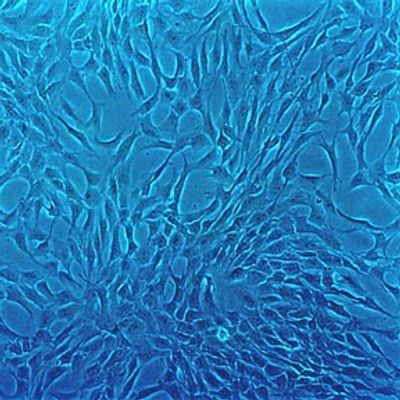

Cell Applications, Inc.
- Home
- Companies
- Cell Applications, Inc.
- Products
- Human Chondrocytes: HC

Human Chondrocytes: HC
Human Chondrocytes (HC) are derived from normal human articular cartilage, where they produce and maintain the extracellular matrix of cartilage, including type II collagen. Used widely in research, the cells are a gold standard control for cellular reprogramming and differentiation. Chondrocytes grown in monolayer culture on a solid surface tend to lose their phenotypic markers, no longer produce Collagen type II and sulfated proteoglycan, and de-differentiate to a fibroblast-like phenotype. In order to regain phenotypic characteristics, de-differentiated chondrocytes should be re-differentiated by encapsulating in alginate beads using the Chondrocyte Differentiation Kit (Cat# 072K).
Most popular related searches
articular cartilage
collagen type
arthritis treatment
veterinary use
monoclonal antibody
cartilage regeneration
inflammatory disorder
medical implant
clinical diagnostics
phenotypic characterization
- Phenotypic characterization and differentiation into osteoclasts.
- Others employ chondrocytes to describe the molecular biology of cell receptors, signaling cascades, cytokine activation and gene regulation.
- The cells are implicated in apoptosis, cytotoxicity, and cartilage degradation seen in inflammatory disorders such as rheumatoid-, osteo- and Lyme disease-associated arthritis.
- By examining the effects of shear stress and mechanotransduction pathways, some hope to develop treatments to thwart erosive joint pathology.
- Some labs look at monoclonal antibody treatment, or inhibition of erosive matrix metalloproteinase enzymes, directed toward arthritis treatment.
- The cells also receive attention for potential clinical applications, since they adhere to medical implants and infiltrate scaffolds for cartilage regeneration.
Tissue: Normal healthy human articular cartilage
QC: No bacteria, yeast, fungi, mycoplasma, virus
Bioassay: Attach, spread, proliferate in Growth Med
Cryovial: 500,000 HC (1st passage) frozen in Basal Medium w/ 10% FBS, 10% DMSO
Kit: Cryovial frozen HC (402-05), Growth Medium (411-500), Subculture Rgnt Kit (090K)
Proliferating: Shipped in Gr Med, 2nd psg (flasks or plates)
Doublings: At least 10
Applications: Laboratory research use only (RUO). Not for human, clinical, diagnostic or veterinary use.
